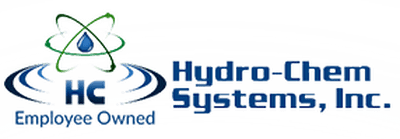To understand how the two-step process removes salt from vehicles we must first understand a little bit about salts. Salts are ionic compounds which means that they are two oppositely charged ions held together by a strong static-electric attraction. For example, table salt is made of a negatively charged chloride ion (anion) and a positively charged sodium ion (cation).
The blanket term “salt” when referring to road-salts is a bit misleading because it implies two things, both false. First, it implies that road-salt is sodium chloride (table salt) as most people use the term “salt” to refer to table salt. Second, the term implies chemical uniformity when, in-fact, road-salts usually comprise many different salts including sodium chloride, magnesium chloride, calcium chloride, sodium acetate, etc. “Salts”, therefore, would be a more accurate term.
The problem with removing road-salt from vehicles arises because while road-salt can generally be dissolved in water, when it reacts with organic molecules such as diesel, motor oil, gasoline, etc., as well as inorganic silicates and carbonates from the road, it forms insoluble complexes on the vehicle’s surface. These complexes are not easily removed with water alone.
Two-step removes these complexes in a variety of ways, including ion-replacement, chelation, competition for the vehicle surface, and rinsing.
2-Step Washing can help prevent rust and corrosion on vehicles by neutralizing road-salt. When removing road salt, the low pH acid Step 1 does the heavy lifting and the high pH alkaline Step 2 works to neutralize the Step 1, leaving you with a neutral water run-off.
2-Step can also help to remove salts by simply competing for the vehicle’s surface. Many polymers and surfactants utilized in the 2-Step process have a higher attraction for the vehicle surface than the salts and scales, and combined with a rinse this also helps loosen the salt.
Ion-replacement is a function of the acid component in the two-step method. Here, an acid trades ions with an ionic compound to make new compounds with different properties. Take for example the reaction of hydrochloric acid (HCl) with calcium carbonate (CaCO3), an insoluble ionic compound, they react to form calcium chloride (CaCl2) and carbonic acid (H2CO3), both of which are very soluble in water.
Chelation can be a function of both the acid and the alkaline components of the two-step system. Chelation means “to grab”, and this is a perfect description of what chelating agents do. Chelating agents are weak, organic acids, with multiple negative charges. These molecules surround the positively charged metal (cationic) components, such as calcium and magnesium, of an ionic compound and form a water-soluble complex that can be easily rinsed off the surface. Examples of chelating agents include citric acid, EDTA, NTA, and phosphonic acid. The alkaline component of an HCS two-step system always contains at least one chelating agent, and the acid component often also contains one.

